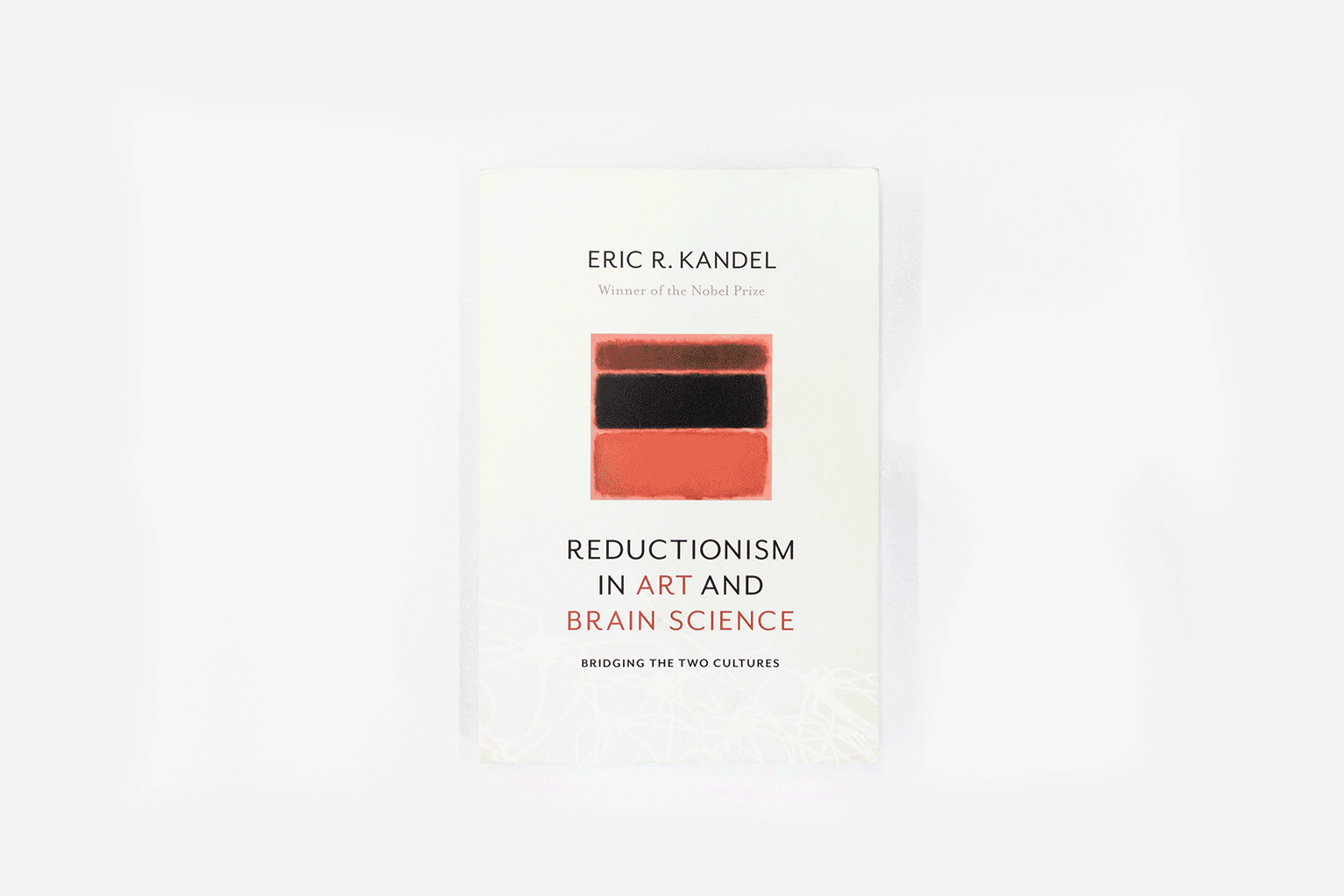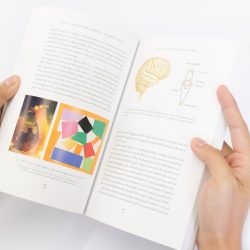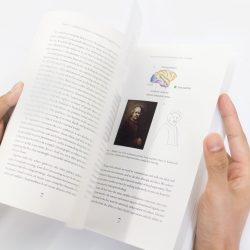IN THIS BOOK, ERIC R. KANDEL SEEKS TO HIGHLIGHT THE WAY TO BRIDGE THE APPARENT DISTANCE BETWEEN THE TWO DISCIPLINES, “ART” AND “SCIENCE”
TEXT: PIM-ORN SUPAVARASUWAT
PHOTO: NAPAT CHARITBUTRA
(For English, please scroll down)
เมื่อเราพูดถึง “ศิลปะ” กับ “วิทยาศาสตร์” สองสิ่งนี้ก็ดูราวกับเป็นศาสตร์ที่ตั้งอยู่ตรงกันข้ามและมาจากคนละฟากฝั่งความคิด ย้อนกลับไปในปี 1959 Charles Percy Snow นักเคมีฟิสิกส์และนักเขียนชาวอังกฤษ เคยกล่าวไว้ว่า ช่องว่างทางความคิดที่ว่านี้เป็นตัวขัดขวางความก้าวหน้าทางความคิดของมวลมนุษย์ชาติ และในปี 2016 ที่ผ่านมา ดีเบตที่ว่านี้ถูกนำมาพูดถึงอีกครั้ง เพื่อเสนอว่าความจริงแล้ว สองสิ่งที่ต่างกันนี้มีจุดร่วมเดียวกัน ในหนังสือ Reductionism in Art and Brain Science โดย Eric R. Kandel
Reductionism in Art and Brain Science
Eric R. Kandel
Columbia University Press, 2016
Paperback
ISBN: 978-0-231-17963-8
“พวกเขามักจะมีภาพความเข้าใจที่ผิดๆ ต่อกัน” C.P. Snow กล่าวไว้ระหว่างการบรรยายในหัวข้อ The Two Cultures ที่ University of Cambridge เมื่อปี 1959 “พวกเขา” ในที่นี้คือคนหัวแข็งสองกลุ่ม ด้านหนึ่งคือกลุ่มนักวิทยาศาสตร์ ส่วนในอีกด้านหนึ่งนั้นคือนักอักษรศาสตร์และวรรณกรรม Snow เชื่อว่าช่องว่างทางความคิดที่ดูจะไม่มีวันเชื่อมถึงกันระหว่างคนสองกลุ่มนี้เป็นสิ่งที่คอยขัดขวางความก้าวหน้าทางปัญญาของมนุษย์ และข้อคิดเห็นที่ว่านี้ก็ได้ทำให้เกิดดีเบทตามมาอีกมากมาย
ล่าสุดดีเบทที่ว่านี้ถูกนำมาพูดถึงอีกครั้งในหนังสือเรื่อง Reductionism in Art and Brain Science (2016) โดย Eric R. Kandel นักเขียนรางวัลโนเบล และศาสตราจารย์ที่ Columbia University ในหนังสือเล่มนี้ Kandel เสนอวิธีการ “เชื่อม” ช่องว่างทางความคิดของศาสตร์สองประเภทนี้ ด้วยข้อมูลประมาณว่า แท้จริงแล้วนั้น คนจากทั้งสองฟากฝั่งทางความคิดนี้นั้นมีวิธีคิดในลักษณะที่คล้ายคลึงกันนั่นคือ ทฤษฎีคิดแบบแยกส่วน (reductionism) ถึงแม้ว่าผลลัพธ์สุดท้ายจะออกมาไม่เหมือนกัน แต่ปฏิเสธไม่ได้ว่าวิธีคิดนั้นกลับคล้ายกันอย่างไม่น่าเชื่อ
Kandel หยิบเอางานศิลปะหลายชิ้นมาเป็นกรณีศึกษาเพื่อชี้ให้เห็นถึงการใช้แนวคิดแบบแยกส่วน (reductionism) ในการเพ่งความสนใจแยกไปทีละเรื่อง คือ รูปทรง (form) เส้นสาย (line) และสีสัน (colours) ในชิ้นงาน ซึ่งคล้ายคลึงกับนักประสาทวิทยา ที่จะเริ่มต้นจากการศึกษาหน่วยย่อยอย่าง กระบวนการเรียนรู้ และความทรงจำ เพื่อที่จะเข้าใจภาพที่ใหญ่กว่านั้นอย่างระบบที่ซับซ้อนของจิตใจ นอกจากนั้น Kandel ยังสนับสนุนความสัมพันธ์ที่กล่าวข้างต้น ด้วยการยกกรณีศึกษาอย่าง ภาพเพ้นติ้งท์ที่มีภาษาที่เรียบง่าย (อย่างถึงที่สุด) ของ Mondrian ว่าได้พื้นฐานบางอย่างมาจากการศึกษาชีววิทยา
ท้ายที่สุดแล้ว สิ่งที่ Kandel คาดหวังก็คือการสร้างบทสนทนาร่วมระหว่าง 2 กลุ่มความคิด เพื่อให้แต่ละฝั่งนั้นได้นำ “มุมมองในสาขาวิชาของตนเองมาเพื่อร่วมกันหาคำตอบเกี่ยวกับมนุษยภาพหรือความเป็นมนุษย์นั่นเอง”

“They have a curious distorted image of the other,” says C.P. Snow in his influential lecture, The Two Cultures, at the University of Cambridge in 1959. These people to which he refers are the stubbornly polarised groups of individuals: the scientists on one end and the literary intellectuals on the other. Snow believes that the seemingly unbridgeable chasm between them hinders the human progress for knowledge, and his arguments have set off a long chain of debates ever since.
A recent contribution to this debate is the book Reductionism in Art and Brain Science (2016) by Eric R. Kandel, a Nobel Prize-winning professor at Columbia University. In his book, Kandel seeks to highlight one way to bridge the apparent distance between the two disciplines. He suggests that some practitioners of the two cultures share reductionist approaches that, although not identical in aims, are analogous in methods.
Kandel examines the works of many artists and shows how their use of reductionism to focus on form, line and colours are very much similar to brain scientists’ approach to studying very simple cases of learning and memory in order to understand the larger, more complex processes of the mind. Kandel supports such a relationship by citing, for example, a study that found an important biological basis for Mondrian’s radically simplified language in his paintings.
Ultimately, the goal for Kandel is to start a dialogue between the two cultures, for each to bring “its particular perspectives to bear on essential questions about the human condition.”







